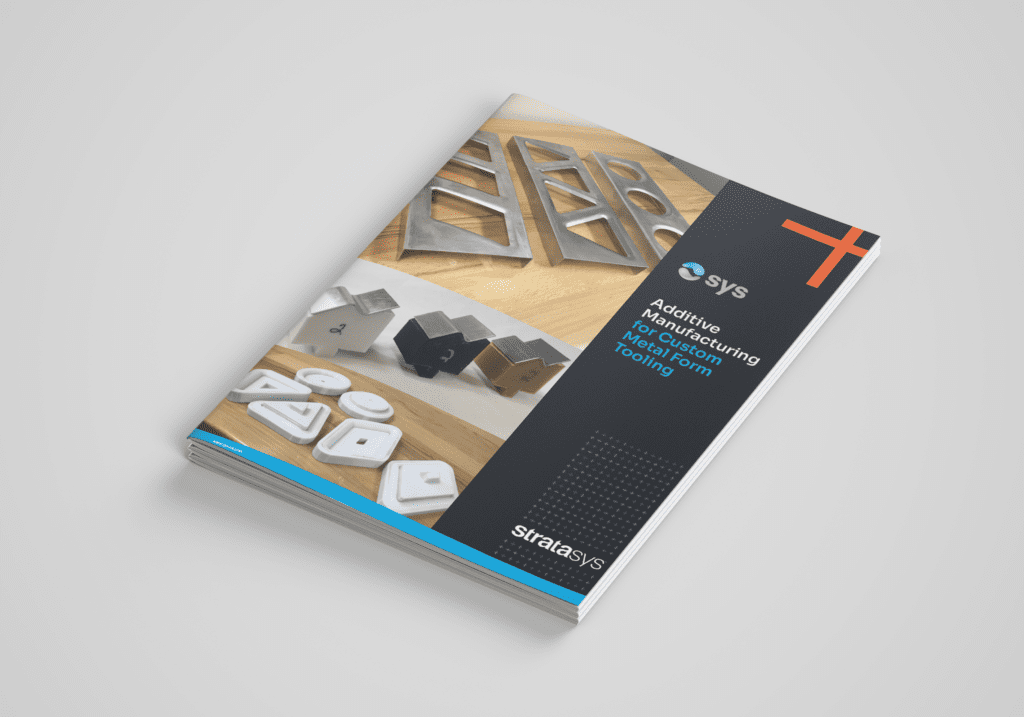White Paper
A guide to Additive Manufacturing for Custom Metal Form Tooling
This white paper presents the findings of a case study involving the use of FDM® additive manufacturing to create custom sheet
metal form tooling. The design and processing techniques are specific to this use case but can be applied to most metal form tooling applications.
Get your copy today to discover a complete application overview and how to achieve the best possible results for custom metal form tooling across the entire industry.
Scroll down to read the preview, or download the full guide today at the link below.

Table of Contents
Contents
Section 1 – Application Overview
Section 2 – Custom Geometry vs. Standard Bends
Contents
- Introduction
- Application Overview
- Custom Geometry vs. Standard Bends
- Material Recommendations and Processing Techniques
- Testing Results
- Considerations
- Conclusion
Introduction
This white paper presents the findings of a case study involving the use of FDM® additive manufacturing to create custom sheet metal form tooling. The design and processing techniques are specific to this use case but can be applied to most metal form tooling applications.
Section 1 - Application Overview
Traditional press brake tooling is machinedn from common tool steels such as A2, D2 or 4140. This tooling can be purchased “off the shelf” from several manufactures (Wilson, Wila, Mate) in standard geometries. However, when a custom tool is needed, the cost and lead time increase drastically. Often, revisions occur during the design process after fit and function testing. These revisions add even more cost and lead time to an already expensive custom tool.
One way to minimize tooling costs during this development phase is to use additive manufacturing to produce custom-geometry tools. Additive manufacturing allows multiple iterations of custom, complex geometries to be printed without the costs and lead times associated with revising a metal tool. Stratasys FDM technology is capable of printing several high-strength thermoplastics that can withstand the pressure of forming thin-gauge metal. Additively manufactured tooling can be used as the production tool for volumes as high as 500 to 1000 pieces depending on the part material, geometry and tool material. For volumes that exceed 1000, it is recommended to use standard metal tooling.
Section 2 – Custom Geometry vs. Standard Bends
Custom tools are commonly used to form complex geometry that can’t be formed with traditional v-die press brake tooling as shown in Figure 2-1. Examples of these geometries include flares, offsets and ribs, where the primary function is to add rigidity and strength to a part without adding additional material.



